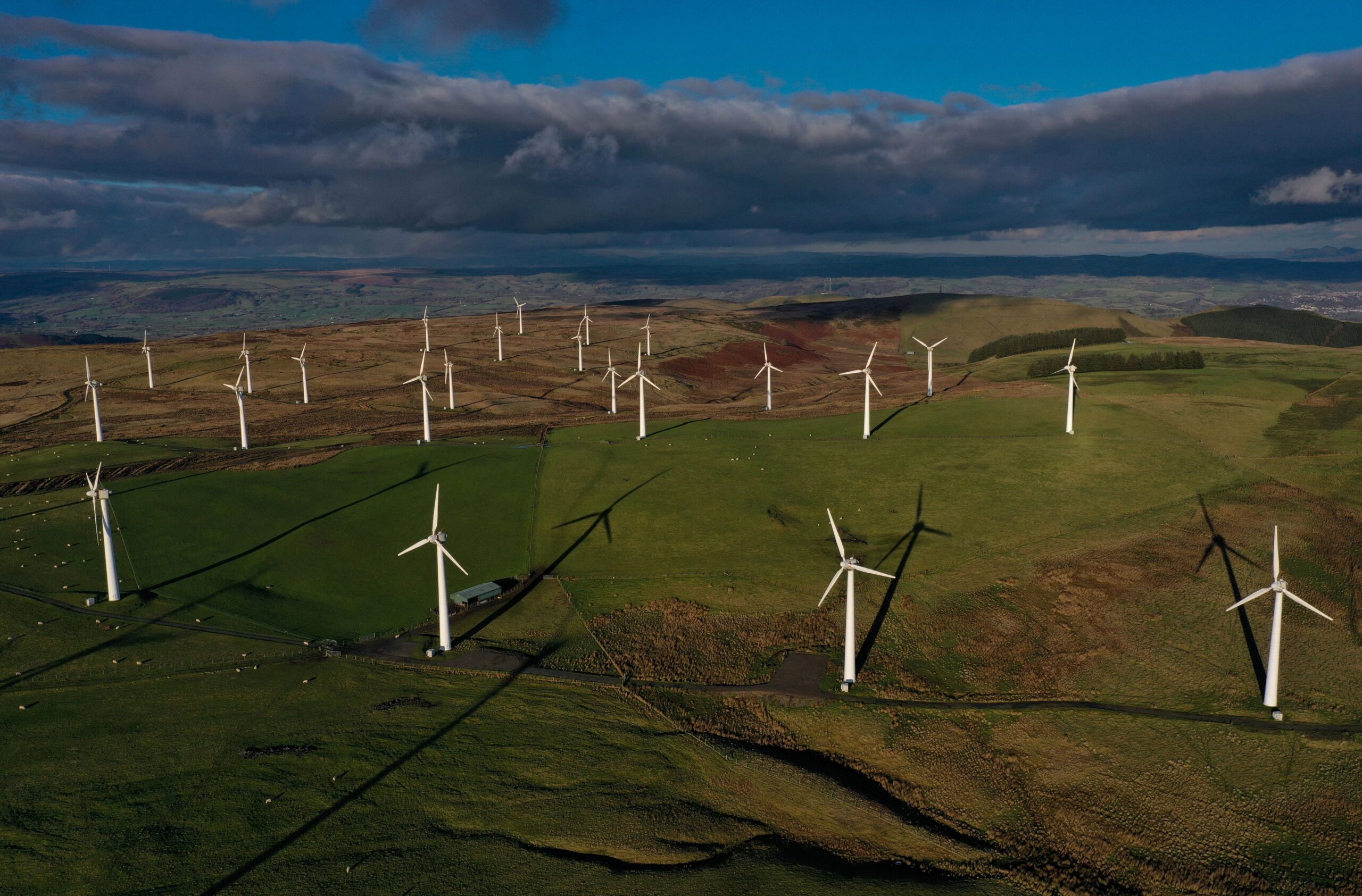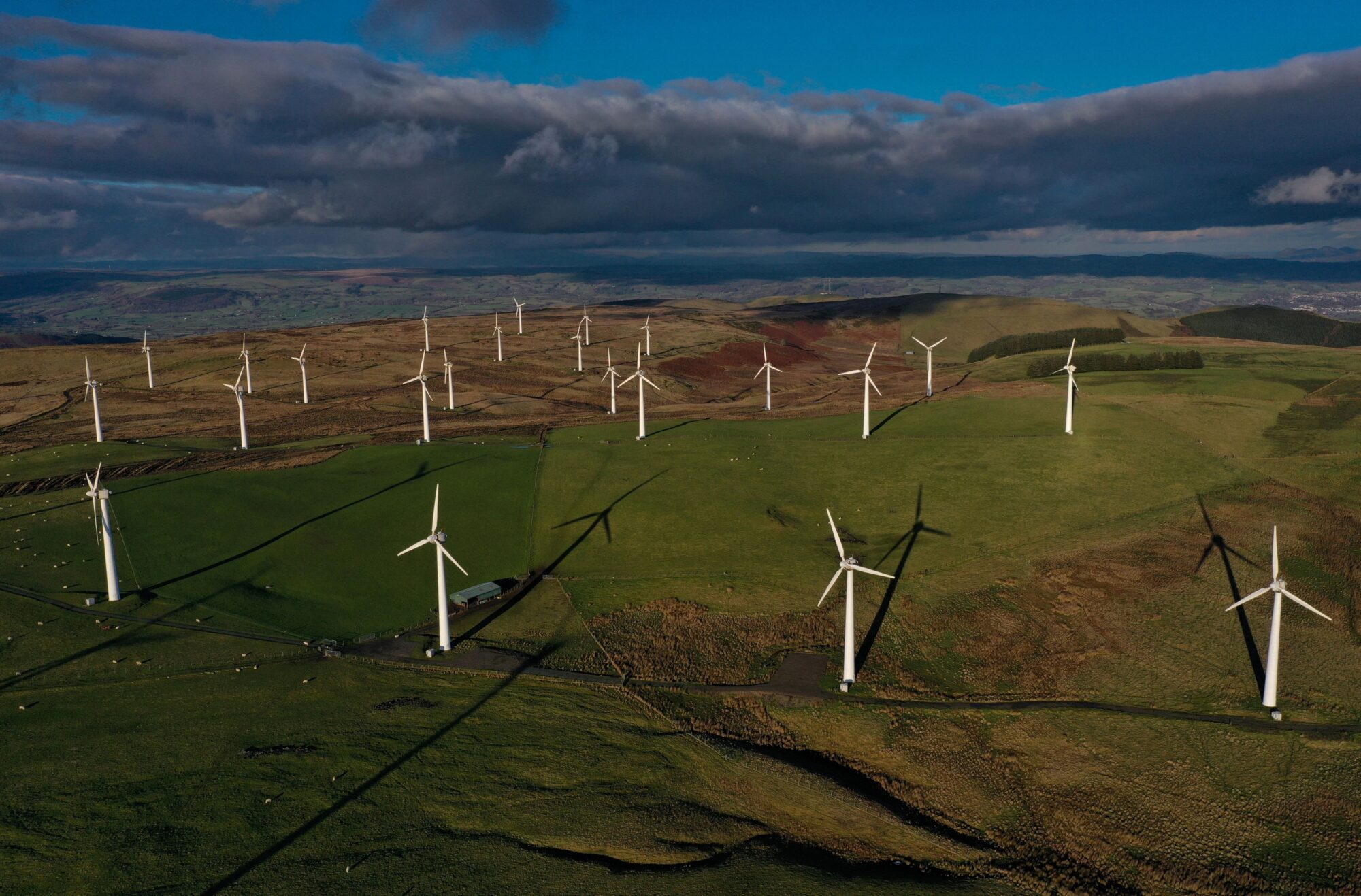Wind power harnesses energy from the movement of air through wind turbines, either on land or out at sea.
Key terms
turbine
a tower with (generally) three blades at the top

windfarm
a collection of wind turbines

onshore wind
wind turbines on land

offshore wind
wind turbines out at sea

For a country like the UK, windfarms offer a plentiful alternative to electricity generated by burning fossil fuels.
What is wind energy?
Wind power is energy generated from the wind using wind turbines – blades arranged in a fan-like shape at the top of a tall tower. Harnessing energy from the wind is not new technology; in fact, it could even be thousands of years old.
Today, there are two kinds of windfarms: onshore and offshore.
- Offshore wind refers to wind turbines placed in clusters out at sea.
- Onshore wind refers to wind turbines placed in groups on land.
How do wind turbines work?
- When the propeller-like blades of a wind turbine are hit by the wind, they act like airplane wings causing lift. They spin around the central axis and create mechanical energy from the movement of air.
- The turbine blades spin a rotor inside the central shaft of the turbine.
- Machinery inside the turbine next to the rotor converts the mechanical energy into electrical energy (electricity) using a magnetic field around an electrical coil, sometimes via a gearbox.
Wind energy pros and cons
Pros:
- Wind energy is clean – there’s no air or water pollution from producing power.
- Wind has among the lowest carbon emissions of any form of energy.
- Wind power is renewable and will never run out.
- Once installed, the energy from wind is very low cost.
- Onshore wind especially is the cheapest source of electricity in the UK, and offshore wind has dropped massively in cost and is a close rival.
- Wind turbines work almost anywhere – Greenpeace activists set one up on a moving oil platform to power their protest!
- They are quick and easy to construct.
Cons:
- They need a lot of space. But onshore windfarms can also be built on farms that can keep growing crops or grazing animals around them. And they can be built out at sea.
- Windfarms need to be designed and placed carefully to avoid harming birds and other wildlife. (But more birds are killed by cats, buildings and fossil fuel plants than wind turbines).
- The wind doesn’t always blow – but installing electricity storage and upgrading the grid to allow more connections with other countries in Europe will help with this.






